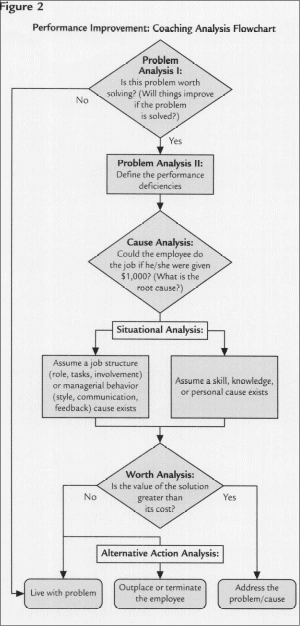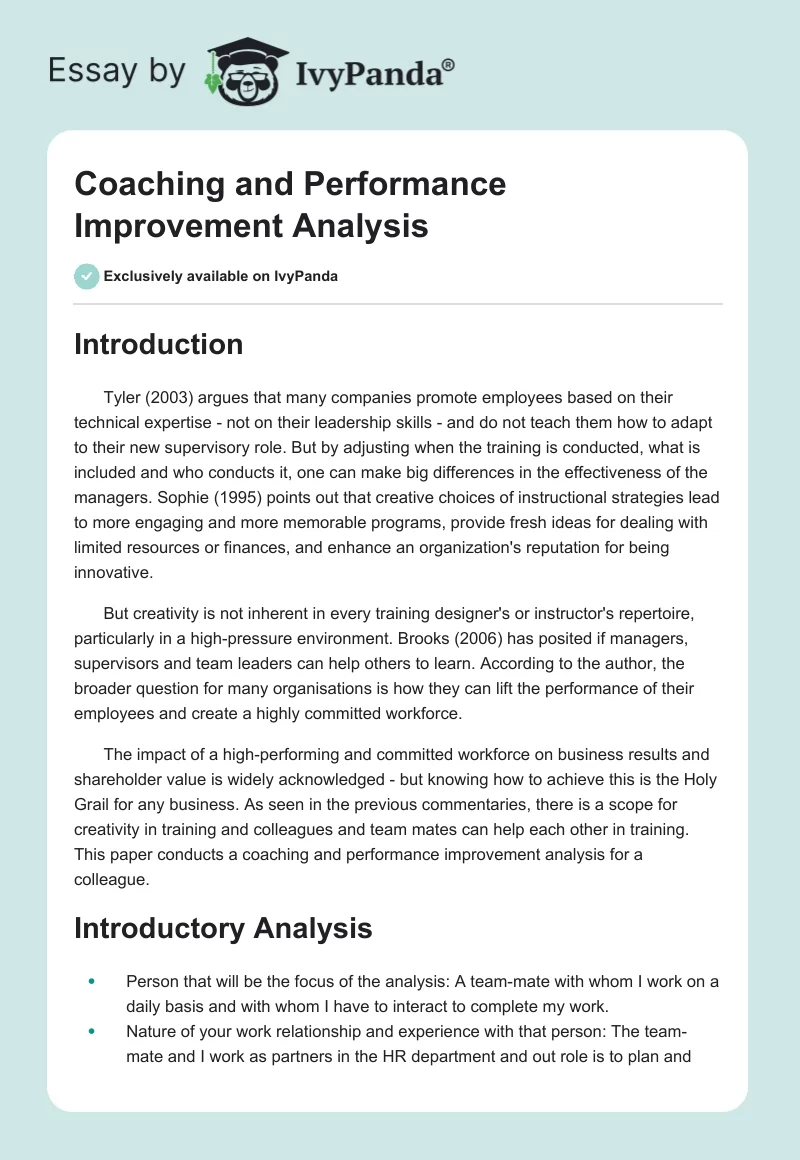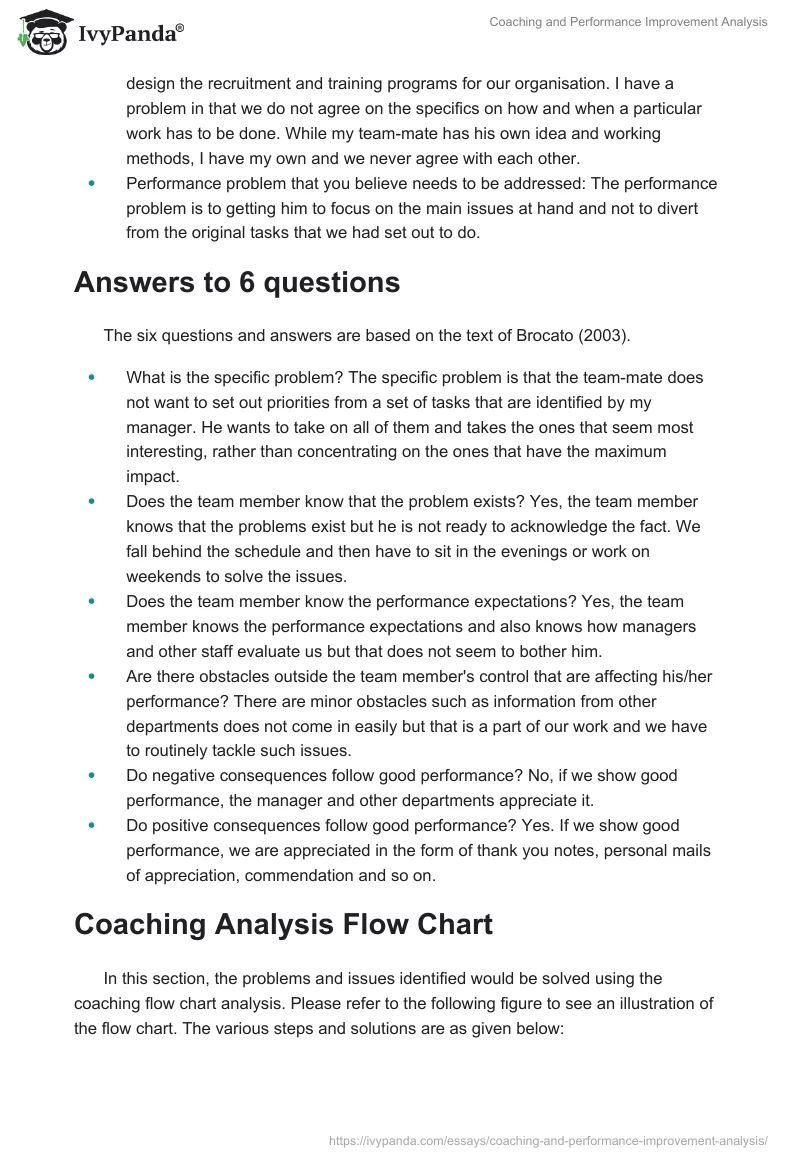Introduction
Tyler (2003) argues that many companies promote employees based on their technical expertise – not on their leadership skills – and do not teach them how to adapt to their new supervisory role. But by adjusting when the training is conducted, what is included and who conducts it, one can make big differences in the effectiveness of the managers. Sophie (1995) points out that creative choices of instructional strategies lead to more engaging and more memorable programs, provide fresh ideas for dealing with limited resources or finances, and enhance an organization’s reputation for being innovative.
But creativity is not inherent in every training designer’s or instructor’s repertoire, particularly in a high-pressure environment. Brooks (2006) has posited if managers, supervisors and team leaders can help others to learn. According to the author, the broader question for many organisations is how they can lift the performance of their employees and create a highly committed workforce.
The impact of a high-performing and committed workforce on business results and shareholder value is widely acknowledged – but knowing how to achieve this is the Holy Grail for any business. As seen in the previous commentaries, there is a scope for creativity in training and colleagues and team mates can help each other in training. This paper conducts a coaching and performance improvement analysis for a colleague.
Introductory Analysis
- Person that will be the focus of the analysis: A team-mate with whom I work on a daily basis and with whom I have to interact to complete my work.
- Nature of your work relationship and experience with that person: The team-mate and I work as partners in the HR department and out role is to plan and design the recruitment and training programs for our organisation. I have a problem in that we do not agree on the specifics on how and when a particular work has to be done. While my team-mate has his own idea and working methods, I have my own and we never agree with each other.
- Performance problem that you believe needs to be addressed: The performance problem is to getting him to focus on the main issues at hand and not to divert from the original tasks that we had set out to do.
Answers to 6 questions
The six questions and answers are based on the text of Brocato (2003).
- What is the specific problem? The specific problem is that the team-mate does not want to set out priorities from a set of tasks that are identified by my manager. He wants to take on all of them and takes the ones that seem most interesting, rather than concentrating on the ones that have the maximum impact.
- Does the team member know that the problem exists? Yes, the team member knows that the problems exist but he is not ready to acknowledge the fact. We fall behind the schedule and then have to sit in the evenings or work on weekends to solve the issues.
- Does the team member know the performance expectations? Yes, the team member knows the performance expectations and also knows how managers and other staff evaluate us but that does not seem to bother him.
- Are there obstacles outside the team member’s control that are affecting his/her performance? There are minor obstacles such as information from other departments does not come in easily but that is a part of our work and we have to routinely tackle such issues.
- Do negative consequences follow good performance? No, if we show good performance, the manager and other departments appreciate it.
- Do positive consequences follow good performance? Yes. If we show good performance, we are appreciated in the form of thank you notes, personal mails of appreciation, commendation and so on.
Coaching Analysis Flow Chart
In this section, the problems and issues identified would be solved using the coaching flow chart analysis. Please refer to the following figure to see an illustration of the flow chart. The various steps and solutions are as given below:
- Specify whether or not the problem is worth solving, and why: The problem is worth solving, as the team member has to work in a more positive way. By solving the problem, our department goals and organisation objectives would be met.
- Clearly define and describe the performance deficiencies: The performance deficiencies relate to: poor understanding of the work requirement; inability to set priorities for the tasks; not able to communicate effectively with other departments; not able to understand the big picture of what needs to be done

- Analyze the root cause(s) of the performance deficiencies: The roots causes for the deficiencies are: lack of training for the team member as he was directly promoted to his present role from that of a worker; no formal coaching given to know supervisory skills and how they are different from that of the worker; no formal training given to communicate effectively and speak about what he wants; managers presumption that is one gets promoted, he should be able to obtain the required skills himself.
- What job structure and/or managerial behaviour causes might contribute to these deficiencies? Our organisation has a relatively flat structure and there are certain overlaps on what each is supposed to do. If everyone is cooperative and takes the extra effort, then everything will go smoothly. If there is even one member with a ‘why me” attitude, then the whole atmosphere is spoilt.
- What knowledge, skill, and/or personality causes might contribute to these deficiencies? The team member had spent about 5 years as a worker and then promoted to his present designation as a supervisor. No efforts were made to find a role fit for him.
- Worth analysis: The team member s hard working and loyal to the company and is very well connected with all other departments. His networking is good and effective. He also has a good knowledge of the way in which people in the organisation work. His deficiencies are because he has never been given formal training or advised on the way he is supposed to work and set priorities in his tasks and he has not been told on how to communicate effectively. It is definitely worth the time, effort and money that would be spent in training him to be more effective.
- Alternative Action Analysis: The best alternative is to ‘Address the problem/ cause’. The employee is valuable and has sufficient knowledge and skills that would be difficult to replace. The problem has to be addressed and sufficient raining and coaching has to be given so that he can be moulded to fit the job requirements. There is no point in living with the problem as this would simply slow down the problem. Terminating him is not the solution as half the organisation has the same set of problems and issues. Outpacing is also another alternative but then the new recruit would have to go through the learning and training to make him suitable for the new job and this would take further efforts and time.
Specific actions to be taken
Based on the discussion done in the previous sections, the following actions are recommended.
- Any training training-related actions are required, and if so what: Training should be given with the understanding that organisations must view the development of managers, supervisors and team leaders to develop others as integral to their philosophy and approach to management development. The practical advantages are time, application, sustainability and value for money. Managers are at their most effective in developing others when they create behaviour change. Invest in managers and set them up for success (Brooks, 2006).
- Any employee development-related actions are required, and if so what: Training and coaching should be given on leadership and supervisory skills, seeing the bigger picture, managing on the micro and macro level at the same time, training on effective communication
- Any non-training and development related actions, and if so what: Non training and development activities are informal discussion sessions with other members of the team where each member discusses his or her problems and invites other to give their views. There should also be sufficient bonding as team members.
- How these actions will address the performance deficiencies identified: By giving proper training and coaching, specific behavioural and attitude problems would be solved and sufficient leadership skills can be developed. By giving him training in communication, he would be more effective in obtaining cooperation from others. By giving him leadership training, he would learn how to delegate and find time to concentrate on the core tasks.
Conclusion
As seen in the above case, my team member has some deficiencies as he was not given proper training and counselling when he was promoted. By providing him with sufficient coaching and training, he can learn to be more effective and we would be able to achieve the department and organisation goals easily. The paper has examined the importance of training and coaching in an organisation and how they can be used to meet the required objectives.
References
Brocato, R. (2003). Coaching for improvement: An essential role for team leaders and managers. The Journal for Quality and Participation, 26 (1), 17-22.
Liebman, S. (1995). Training 101: The 3-5-3 approach to creative training choices. Training & Development, 49 (2), 11-17.
Brooks, W. (2006). Managing to learn. Training Journal, pp. 35-38.
Tyler, K. (2003). Sink-or-swim attitude strands new managers. HRMagazine, 48 (2), 78-84.


